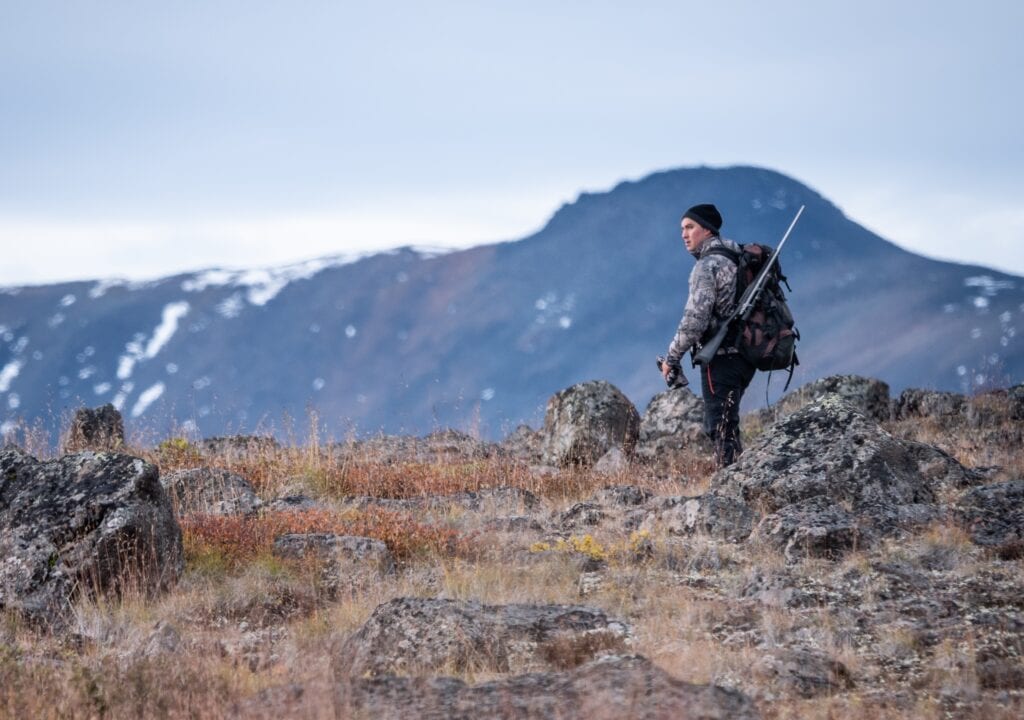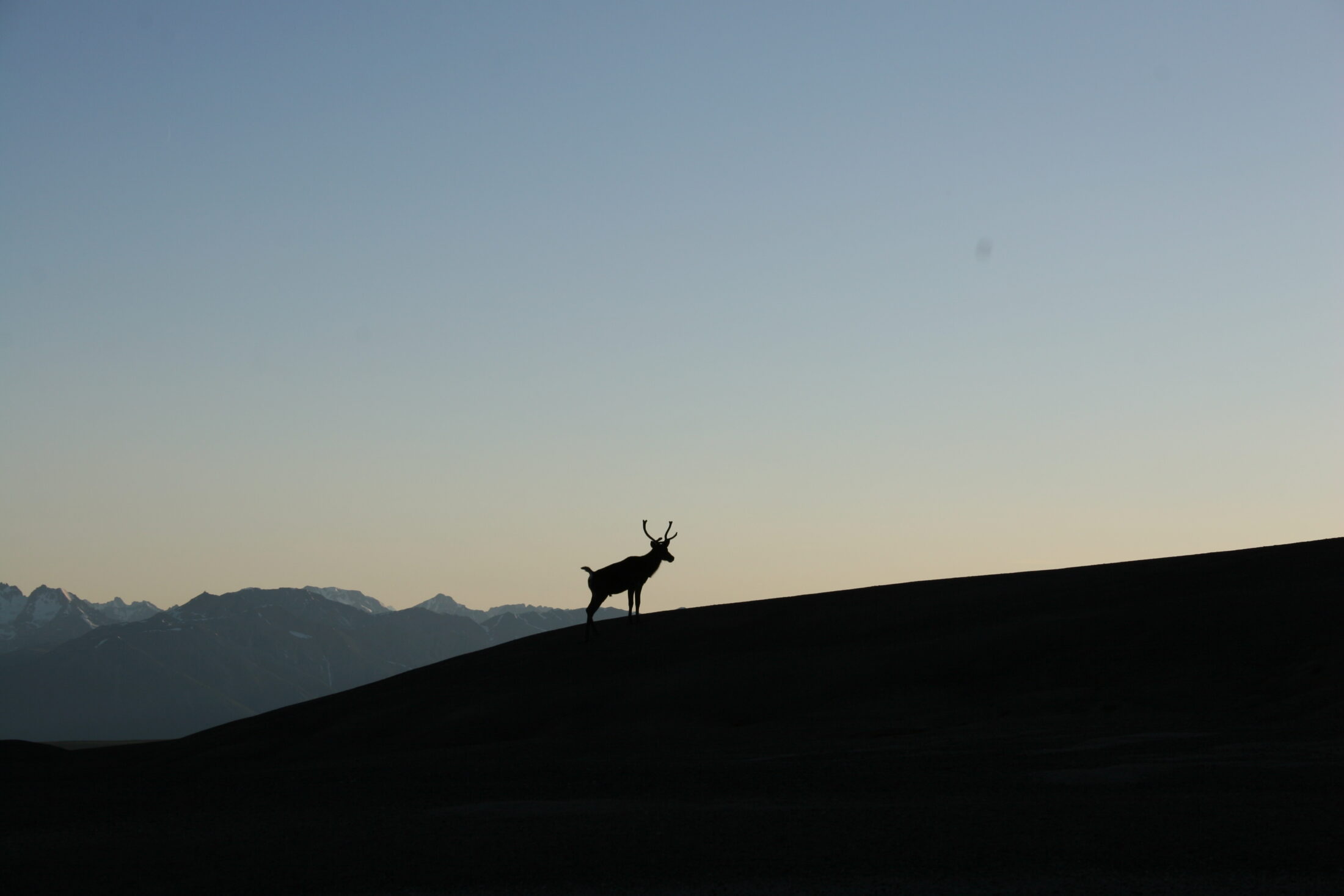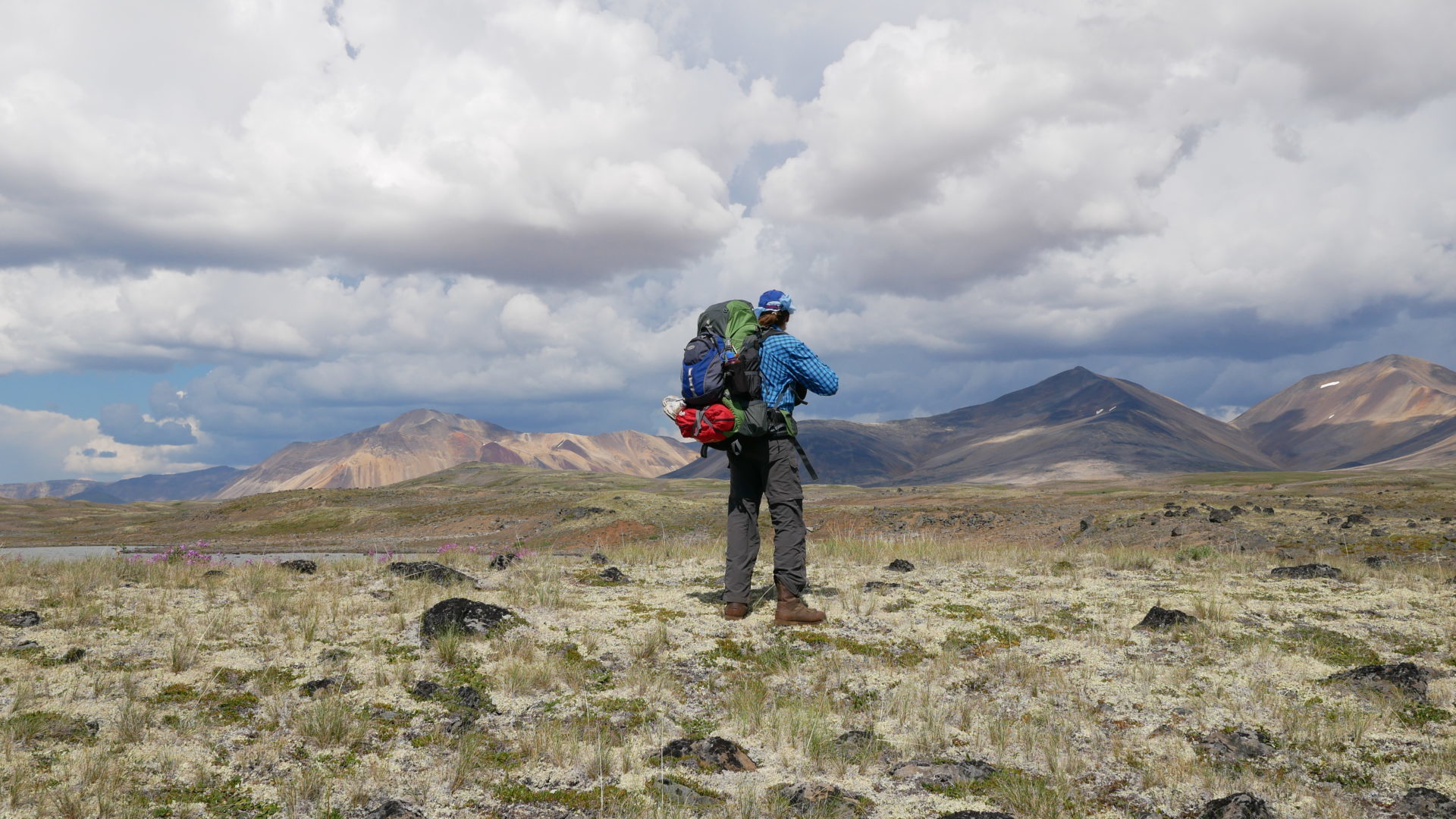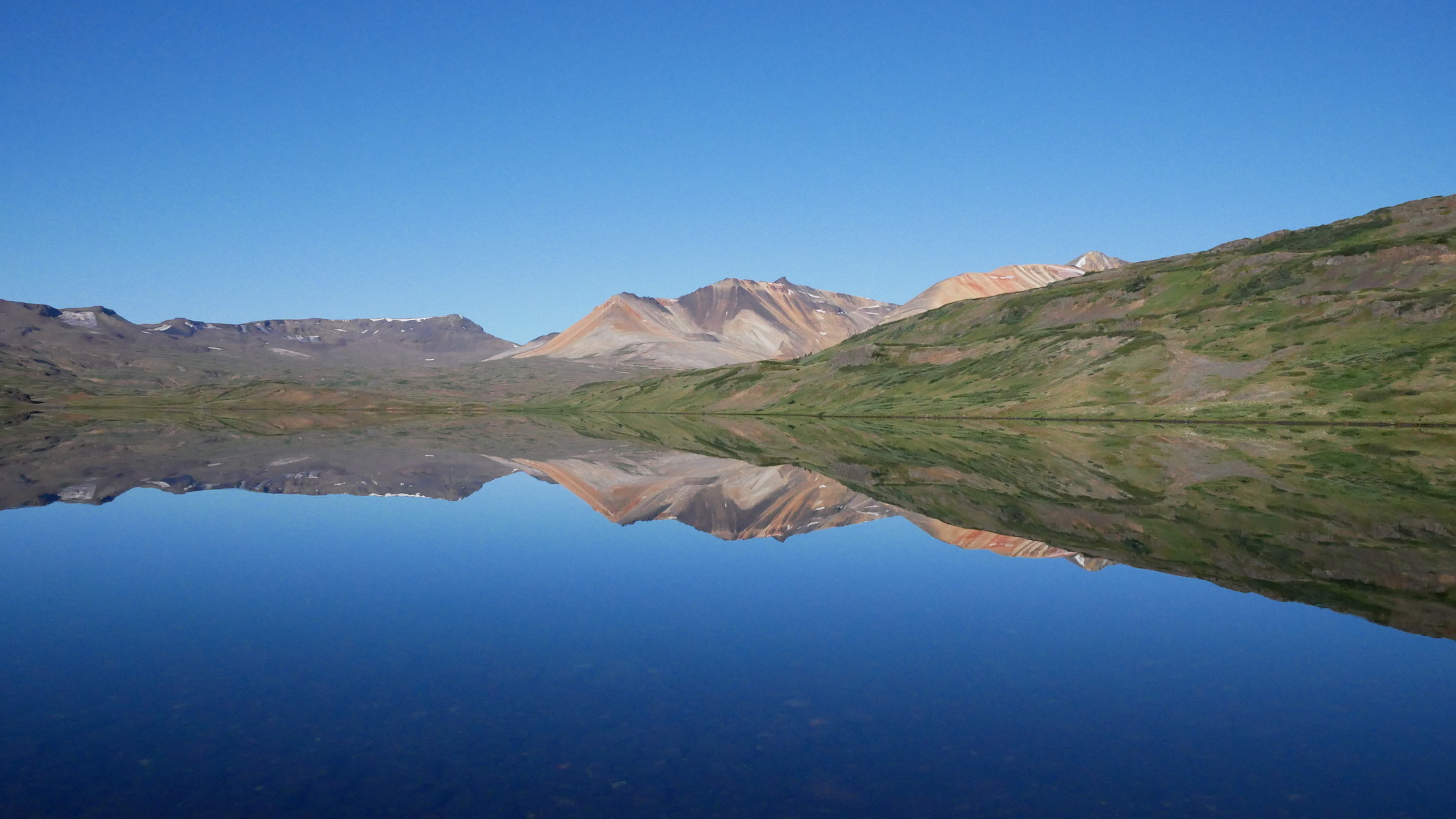
The Narwhal’s in-depth environmental reporting earns 11 national award nominations
From disappearing ice roads to reappearing buffalo, our stories explained the wonder and challenges of...
Thanks to a unique collaboration between the Tahltan Nation, the B.C. government, a mining company and non-profit environmental organizations, an area of ecological and cultural importance on the eastern slopes of Mount Edziza, known to the Tahltan as Ice Mountain, is now permanently protected.
Much of the landscape around the mountain — 230,000 hectares — was protected in 1972 as a provincial park, but 3,500 hectares were left open to industrial activity due to existing mineral tenures. The new Mount Edziza Conservancy, announced Thursday, closes the book on those tenures and any industrial activity in the area.
“I’m very relieved and very proud of all the hard work of our team and of all the leaders and Tahltans that have been advocating to protect this area for the decades,” Chad Norman Day, president of the Tahltan Central Government, said in an interview. “Mount Edziza is one of those areas, similar to the Stikine River, the Sacred Headwaters and Sheslay Valley, that is amongst the most sacred places to the Tahltan people culturally.”
Skeena Resources, a mining company with several interests on Tahltan territory, agreed to surrender its claims on the mountain’s slopes. The Tahltan received $5 million, roughly one-fifth of the market value of the tenures to help set up the conservancy, according to the company. The Tahltan, in turn, invested the funds in Skeena Resources. The province paid half the bill and the federal government and NGOs, including the BC Parks Foundation and the Nature Conservancy of Canada, funded the remainder.
“It’s encouraging to see governments, Indigenous peoples, industry, philanthropic foundations and conservation groups working together to protect our iconic natural environment in British Columbia and across the country,” federal Minister of Environment and Climate Change Jonathan Wilkinson said in a statement.
Mount Edziza is part of a volcanic complex that has been active for around 8 million years. The most recent eruptions were around 1,000 years ago, making it one of Canada’s youngest volcanoes. Vast amounts of obsidian can be found on the landscape, which the Tahltan historically used to make tools and traded widely with other First Nations for resources like oolichan grease. Tahltan obsidian artifacts have been discovered thousands of kilometres away, in places like Alaska and Alberta.
“You’d be hard pressed to find any cultural area that is more important, because without Mount Edziza, we would not have the obsidian which gave us all of these distinct advantages over others with weaponry and tools and trading goods,” Day said.
The area also supports a wide variety of wildlife, including caribou, moose, grizzlies, wolves, mountain goats and Stone sheep.

Tahltan Central Government President Chad Day says Mount Edziza is an area of great cultural importance for his nation. Photo: Adam Amir / Tahltan Central Government
Much of Tahltan territory is home to an area known in the mining industry as the “Golden Triangle” — a mineral-rich region currently experiencing a modern-day gold rush. The Tahltan Nation is generally receptive to mining development on its territory and works closely with companies to ensure any mining activity is done in accordance with Tahltan laws and policies. But the nation emphatically opposes mineral exploration in certain areas, including Mount Edziza.
Read more: Tahltan Nation evicts Doubleview Gold from territory over refusal to respect Indigenous law
In the 1990s, the land now preserved by the conservancy was designated a recreation zone, but when B.C. developed the Cassiar Iskut-Stikine land and resource management plan in 2000, the area was redesignated as a zone permitting mineral exploration, with a caveat that the end goal was to add it to the provincial park. Staking, mineral exploration and mine development would be allowed for 20 years, at which point the land would be added to the park if there were no existing tenures in place. If tenures were still current at that point, the area would remain unprotected until those claims lapsed.
But after nearly two decades of uncertainty, the Tahltan weren’t willing to wait any longer. In 2019, the nation informed Skeena Resources of its plans to permanently protect the area. Day said the company was excited to work with the nation on the conservation initiative.
” … we … decided that returning the land was the right thing to do.”
“Skeena wholeheartedly wanted to do something that was very culturally significant for Tahltan people,” Day said. When he explained how sensitive the area was and how Tahltans were opposed to development in the area, the company agreed to start working with the nation and the province to find a solution.
“Through a series of conversations and discussions, we gained a better understanding about the cultural significance of Edziza and decided that returning the land was the right thing to do,” Walter Coles, president of Skeena Resources, told The Narwhal in an interview.

The Tahltan Nation is hoping to establish Indigenous Protected and Conserved Areas in several areas including Sheslay and Ice Mountain (Mount Edziza), shown here, part of which is already protected as a provincial park. Photo: Matt Simmons
Day said working with the company has been refreshing.
“Skeena has just been a very progressive company that clearly wants to come in and make its mark and do some reconciliation work.”
The relationship between the Tahltan Central Government and Skeena Resources is an example of how industry and Indigenous communities can work together, George Heyman, Minister of Environment and Climate Change Strategy, told The Narwhal in an interview.
“It’s a good example of the growing partnerships between … mineral exploration and development companies with Indigenous people,” he said, adding that it exemplifies a form of respect and partnership between First Nations and industrial companies that has largely been absent in B.C.’s history.
Day agreed. “We wish more companies would be as ambitious about reconciliation and working with nations to protect sensitive areas, as Skeena has been. I hope that other companies in our territory can learn from this.”
The Tahltan Nation opted to protect the area as a conservancy, instead of adding it to the provincial park, to ensure community members could continue to hunt, fish and otherwise use the landscape.
“What is clearly off the table is commercial logging, for instance [and] mining,” Heyman said. “We certainly expect that the conservancy will provide a range of public use opportunities that are consistent with the cultural values and interests of the Tahltan people.”
He said there is also a Tahltan guide-outfitting company that operates in the area, which will be able to access the area for guided hunting trips.
“The Tahltan, generally, are very grounded in their history and their culture and their values,” Heyman said. “But they take that and look for ways to find economic and development opportunities that are consistent with those values.”
Day said the conservancy also gives the Tahltan Nation flexibility in how it manages the health of animal populations in the region. As The Narwhal previously reported, the Tahltan Nation is exercising its Indigenous Rights and Title to manage wildlife on the territory.
“It’s an area with a lot of the iconic, culturally important animals and given the ongoing concerns that we have, especially with ungulate management, coupled with the fact that we’re doing our own predator management, in a conservancy we’re still allowed to do that.”

Tahltan backcountry and cultural guide Curtis Rattray on the Arctic Lake Plateau in Mount Edziza Provincial Park. The Mount Edziza Conservancy, unlike the provincial park, will remain open to hunting and fishing. Photo: Carol Linnitt / The Narwhal
The 3,500-hectare Mount Edziza Conservancy is the one of three major projects the Tahltan Nation is working on, as part of its Tahltan Stewardship Initiative, which includes developing a land use plan for the entire territory. The other areas — Sheslay and Klappan — span nearly one million hectares of the territory.
“This decision was made a long time ago,” Day said. “The Tahltan universally agreed that this area needs to be protected.”
Frank Brown, a Heiltsuk Hereditary Chief and member of the Indigenous Leadership Initiative, told The Narwhal in an interview Indigenous-led conservation is essential as Canada grapples with climate change and biodiversity loss. He noted the federal government committed to protecting 25 per cent of the country’s land and water by 2025 and 30 per cent by 2030.
“Indigenous people have been advocating to achieve that and it should be Indigenous-led because of our inalienable relationship to our place,” he said.

Little Ball Lake is located in Mount Edziza Provincial Park, B.C. Photo: Carol Linnitt / The Narwhal
He explained how conservancies and Indigenous Protected and Conserved Areas benefit everyone — First Nations, government and industry. “What happens currently is a development will be proposed in an area that is sensitive, even sacred to certain Indigenous groups, and it creates a collision of controversy and conflict.”
He said Indigenous-led conservation clearly outlines which activities are permitted on a landscape and which activities are off the table.
“Having those conversations in advance with First Nations in British Columbia, who have unceded title and rights, can create certainty for all of us.”
Editor’s note: The organizations that supported the creation of the Mount Edziza Conservancy include BC Parks Foundation, Nature Conservancy of Canada, Government of Canada through the Natural Heritage Conservation Program (part of Canada’s Nature Fund), Wyss Foundation, MakeWay, Wilburforce Foundation, MapleCross Fund, Sitka Foundation and Leon Judah Blackmore Foundation. The Narwhal receives financial support from both MakeWay and Wilburforce and discloses sources of funding as part of our code of ethics. As per The Narwhal’s editorial independence policy, no source of funding has any influence over our editorial process.
Updated April 9, 2021, at 12:20 p.m. PT: This story was updated to clarify Skeena Resources did not receive direct compensation for surrendering its mineral tenures.
Get the inside scoop on The Narwhal’s environment and climate reporting by signing up for our free newsletter. On a warm September evening nearly 15...
Continue reading
From disappearing ice roads to reappearing buffalo, our stories explained the wonder and challenges of...

Sitting at the crossroads of journalism and code, we’ve found our perfect match: someone who...

The Protecting Ontario by Unleashing Our Economy Act exempts industry from provincial regulations — putting...
